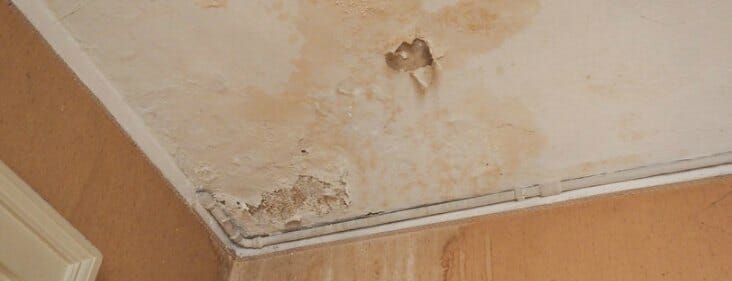Understanding What Leads To Water Seepage Occur So Often in Your Home
Understanding What Leads To Water Seepage Occur So Often in Your Home
Blog Article
What are your ideas on How Fast Water Damage Can Ruin Your Home?

Leakages not only create waste of water yet can likewise cause unneeded damage to your residence and also advertise unwanted natural development. Regrettably, water leakages may go undetected because the majority of the pipework in our home is concealed. By looking and also understanding for daily situations that create leaks, you can secure your home from future leaks and also unnecessary damages. Today, we will check out six leak causes that may be creating your pipelines to drip.
Encroaching roots
The majority of water leakages start outside your house rather than inside it. If you observe an unexpected decline in water stress, say in your faucet, take time to head out and also examine your lawn. You may notice damp spots or sinkholes in your lawn, which might indicate that tree roots are getting into water lines causing water to leak out. You can have your plumber check for invasion, particularly if you have trees or bushes near your residential property.
Corroded water supply
This may be the reason of staining or bending on your water pipes. If our plumbing system is old, consider changing the pipes since they are at a greater risk of deterioration than the newer versions.
Faulty Pipeline Joints
The point at which your pipelines connect is often the weakest link in the waterline. Pipe joints can wear away in time, leading to water leakages. Sadly, most of pipeline joints are not conveniently visible. If you have loud pipelines that make ticking or banging noises, particularly when the hot water is switched on, your pipeline joints are possibly under a great deal of stress. It is a good idea to have your plumber inspect your system annually.
Instant temperature level modifications.
Extreme temperature level adjustments in our pipes can create them to broaden and get unexpectedly. This development as well as tightening may create cracks in the pipelines, especially if the temperature level are below freezing. If you kept an eye on just how your plumbing works, it would be best. The existence of the formerly mentioned scenarios regularly indicates a high risk.
Poor Water Connectors
At times, a leak can be caused by loosened tubes as well as pipes that provide your home appliances. In situation of a water connections leakage, you may observe water running directly from the supply line or puddles around your home appliances.
Clogged Drains
Clogged drains pipes might be irritating as well as inconveniencing, yet they can sometimes wind up causing an overflow leading to break pipelines. Keep getting rid of any materials that may decrease your drains pipes that can obstruct them to stay clear of such aggravations.
All the above are reasons for leakages yet not all water leakages result from plumbing leaks; some leaks may come from roofing leakages. All leakages should be fixed instantly to prevent water damage.
Leaks not just trigger waste of water however can likewise cause unneeded damage to your residence as well as advertise unwanted natural growth. By looking and also comprehending for day-to-day circumstances that create leaks, you can shield your home from future leaks and also unnecessary damage. Today, we will certainly look at 6 leakage causes that may be creating your pipelines to leak.
At times, a leak can be created by loosened hose pipes as well as pipelines that supply your appliances. In instance of a water links leakage, you might discover water running straight from the supply line or pools around your home appliances.
How To Check For Water Leak In Your Home
How To Check for Leaks
The average household's leaks can account for nearly 10,000 gallons of water wasted every year and ten percent of homes have leaks that waste 90 gallons or more per day. Common types of leaks found in the home are worn toilet flappers, dripping faucets, and other leaking valves. These types of leaks are often easy to fix, requiring only a few tools and hardware that can pay for themselves in water savings. Fixing easily corrected household water leaks can save homeowners about 10 percent on their water bills.
To check for leaks in your home, you first need to determine whether you're wasting water and then identify the source of the leak. Here are some tips for finding leaks:
Take a look at your water usage during a colder month, such as January or February. If a family of four exceeds 12,000 gallons per month, there are serious leaks.
Check your water meter before and after a two-hour period when no water is being used. If the meter changes at all, you probably have a leak.
Identify toilet leaks by placing a drop of food coloring in the toilet tank. If any color shows up in the bowl after 10 minutes, you have a leak. (Be sure to flush immediately after the experiment to avoid staining the tank.)
Examine faucet gaskets and pipe fittings for any water on the outside of the pipe to check for surface leaks.
Undetected water leaks can happen without the home or business owner even realizing. If you suspect a water leak, but not able to find the source. It is time to contact a professional water leak detection service, The Leak Doctor.
How To Find a Water Leak In Your Home
https://www.leakdoctor.com/blog/How-To-Check-For-Water-Leak-In-Your-Home_AE197.html

I recently found that piece of writing about Common Water Leaks In House when doing a search on the web. Do you know another individual who is sincerely interested in the niche? Be sure promote it. Thanks for your time. Visit us again soon.
Contact Us Report this page